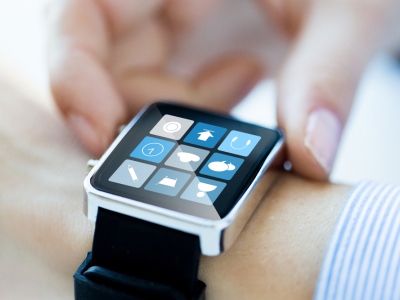
It’s official: The HP Slate running Windows 7, now called the HP Slate 500 (don’t ask us why, we have no idea either). Though HP had long ago decided to target only the enterprise market with this device, they will offer it for $799 to anyone who wants to buy it. For the mass market, HP plans to introduce a WebOS based tablet later.
The lack of excitement on the announcement is understandable. The device has been public information for eons. The only piece of news is the price. The comparisons with the first commercially successful tablet, the Apple iPad, are also understandable. We won’t spend too much time on comparison with the iPad, instead focusing on the smartness of HP’s move to release a Windows 7 tablet aimed at the enterprise market, at a time when everyone else is calling out the OS for its lack of touch-friendly UI.
iPad comparison

(Image Source)
There’s a singular reason why we do not want to waste too many words on this – the iPad and the Slate 500 both target very different markets. You are either a casual tablet user who wants one for media consumption, or you are a user who is looking to get some serious work done on his/her device and needs a comprehensive set of features, especially for content creation and transfer. In this context, HP’s move to target the Slate 500 at the enterprise market is a good one. Many enterprises are looking for a tablet for their employees. And while many have handed out iPads, it’s more due to a lack of options than anything else. With the HP Slate 500 coming in, offering a real desktop OS and a USB port, among other features, enterprises now have a great option.
Some label the HP Slate 500 expensive relative to the iPad. The top-of-the-line iPad, with a similarly sized 64 GB SSD, comes at $699. The HP Slate costs $799. But consider that HP also throws in a free dock and case. Most importantly, it adds a Wacom Digitizer to the list, an addition that by itself drives up the cost significantly. Add in the added bonuses of a bigger RAM, a more feature-rich OS, two cameras, 1080p video playback, a faster processor, etc and it is easy to see that the Slate 500 actually gives better value for money.
Best Attractions

The HP Slate 500 is powered by an Atom Z540 processor with clock cycles ticking in at 1.86 GHz.
One of the biggest features of the Slate 500 is the addition of a Wacom active Digitizer. While this is undoubtedly a great plus for artists, even those who tend to write a lot on their computers will find it pretty useful.
An even bigger attraction is the OS it runs. Say what you might about the touch-responsiveness of Windows 7, the ground reality is that it isn’t too bad after you get used to it. And once that happens, you can realize the true potential of a full-blown desktop OS on a sturdy little tablet PC. Every program that you can run on your laptop, you can run on this, provided, of course, that the program can make do with 2 GB of RAM.
Initial previews of the device show that it runs fairly smoothly. No one expects it to run Windows 7 as fast as a laptop, but it still manages to impress. We will have to wait for some really comprehensive reviews before we can judge its speed, though.
Filling the huge hole
“I am a IT guy also and we do not support iPads, iPhones, or iPods…” – comment on engadget.com
This is not the only comment we found from workers in the IT sector decrying the inherent unsecure nature of the iPad.
Let’s go back to HP’s decision to make this an enterprise only device. Honestly, this is the best decision we have heard in recent times. The current best-selling tablet is a great device for consumers looking to browse the web and listen to some music while they are at it. Or for those who want to read an e-book on their way to work. But an enterprise cannot expect its employees to survive on that particular gadget. There is a huge, gaping hole in the enterprise segment, which is exactly what the Slate 500 is hoping to fill. Native multi-tasking, a host of programs already developed for the platform and other features make for real enterprise utility. The presence of a USB port and easy access to the company’s network means that the Slate 500 doesn’t have to work on the cloud at all times, even though it can. This is unlike the other tablet on the market today which expects consumers to perform all file transfers via the cloud.
Will it sell?
We can’t really be too sure till we see some reviews, but we certainly believe so. The HP Slate 500 might not out-sell the iPad, but it is unlikely to be out-classed by any other tablet in the near future. At a time when all the major tablet makers are using mobile OSes customized for bigger screens, HP’s Slate 500 comes as a breath of fresh air. The utility it brings with it is unparalleled, and the device is a very attractive option for enterprise buyers. Indeed, we have little doubt that it will perform extremely well in its target market. The casual tablet user might prefer another tablet for a more touch friendly UI, but anyone looking to get the most out of their gadgets will definitely take a good look at the Slate 500.










Comments